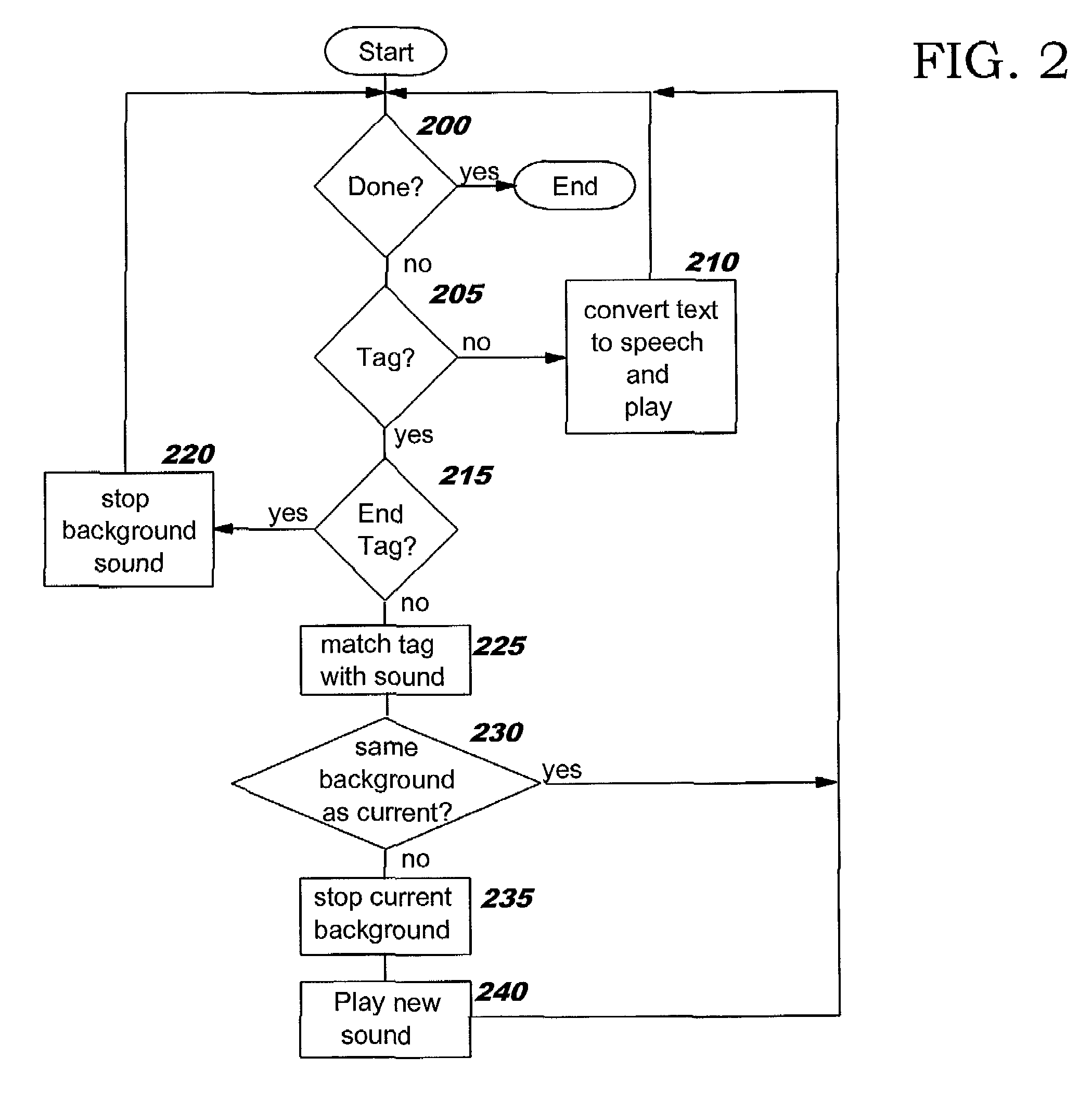Audio renderings for expressing non-audio nuances
a technology of audio and nuances, applied in the computer system, can solve the problems of user extra actions (which may or may not be successful), emotional difficulties, and difficulty in communicating emotions in the words of an e-mail message, and achieve the effect of avoiding disadvantages in distance communication
- Summary
- Abstract
- Description
- Claims
- Application Information
AI Technical Summary
Benefits of technology
Problems solved by technology
Method used
Image
Examples
Embodiment Construction
[0034]The present invention improves distance communications which use messages rendered in audio form, and in particular, audible messages that result from translating a non-audio message (such as an e-mail message or other textual message or file) into an audio form for playback to a listener. Additional context beyond the audibly rendered word is provided during audio messages when using the teachings of the present invention in order to express various nuances of the non-audio message. The disclosed techniques enable (inter alia) the listener to regain contextual information that has been lost in a text-to-speech translation process, and / or to perceive how accurate this translation is estimated to be, using audio cues that are rendered simultaneously with the audible message. Furthermore, techniques are disclosed which associate additional contextual information with a rendered message through use of added audible information, such as a background sound which is appropriate to t...
PUM
 Login to View More
Login to View More Abstract
Description
Claims
Application Information
 Login to View More
Login to View More - R&D
- Intellectual Property
- Life Sciences
- Materials
- Tech Scout
- Unparalleled Data Quality
- Higher Quality Content
- 60% Fewer Hallucinations
Browse by: Latest US Patents, China's latest patents, Technical Efficacy Thesaurus, Application Domain, Technology Topic, Popular Technical Reports.
© 2025 PatSnap. All rights reserved.Legal|Privacy policy|Modern Slavery Act Transparency Statement|Sitemap|About US| Contact US: help@patsnap.com



